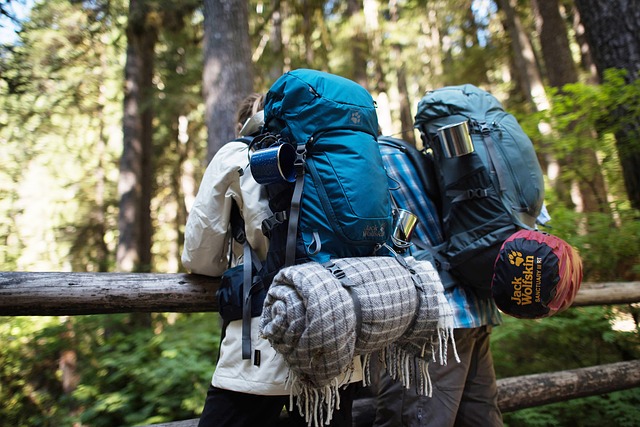Tips for buying the best backpack for you

Backpacks are a crucial piece of kit for anyone going on a hike, or spending prolonged time outside. Here’s our helpful guide to what you should look for in a backpack.
Try it on
In the age of internet shopping, where items can be bought at the touch of a button, it’s all too easy to impulse buy. Fine, if you’re happy to buy based on looks and the product description, but you cannot test how it feels. Does it rub when you wear it? Is it slightly too long on you? Do the straps not do up tight enough? Does it squeak when you move?

All these things can make for an annoying or painful hike. You really can’t rely on other people’s reviews either, because every person has a slightly different body shape and a completely different idea of comfort. It’s often hard to tell how long they’ve had the bag for and whether they’re using it for day hikes or an expedition. A backpack might seem fine for a day hike but really start to rub after two – for instance.
Fit for Purpose
What you want to use your backpack for will make a huge difference to which one you buy. I’d love to have a multi-purpose rucksack, one that I can take on day hikes and go camping in. But in reality, you just end up carrying an awkwardly large rucksack on your day walk. It’s fine for a while, but eventually you’ll get fed up with it.

So, what do you need to look for? The features for length of trip are: how big it is (backpack capacity), whether or not it has a built in frame and which straps does it have?
Capacity
The capacity of a backpack is typically measured in litres. You’re looking at 25-35 L on a day walk, 35-50 L if you’re leading the group or have a lot of extra kit and 60-100L for weekends or longer expeditions. I happily fit everything I need for a long expedition into a 70L rucksack.

You may find that the capacity is listed as two numbers added together: for example 60 + 10L. This means that the main body of the rucksack has 60L of space and any outside pockets have a combined capacity of 10L.
If you’re looking for the fabled rucksack for every occasion, like me, try to find one with a “floating lid”. This means that you can fill your backpack until it’s bursting at the seams and the lid will still shut. That’s how I manage to go camping in a 48L rucksack that also fits in airplane hand luggage…
Frames and Straps
Having a rigid framed rucksack is a matter of personal preference. A frame allows space for venting (letting your back cool off) and stops your bad packing from sticking out between your shoulders all day. Usually, the larger capacity backpacks will have a built in frame.

The same goes for straps. You should be looking at the waist strap, the should straps and the chest strap. The amount of padding on these will make a massive difference to the comfort of your expedition. Some come with special technology that molds to the shape of your hips and shoulders to eliminate chafing.
But on a small, say 25L rucksack, the waist strap can be superfluous and really annoying. If you don’t want to wear it, you might have it swinging into the back of your legs all day.
Features
People often forget this. A backpack is a backpack is a backpack – right? Well no actually, it isn’t! So much design effort goes into making a backpack that you will notice if you’re not using it for the sport it was designed for. Ever wondered why most long-distance trekking bags have pockets in the waist belt? Answer: easy access food and munchies! Trust me, once you’ve got used to having them, it’s a huge pain to take you bag off to get food out.

On the other hand, a bag designed for climbing will be slim-lined with no outside pockets, but lots of loops to hang things off. Some even have clips so you can get the waist belt out of the way entirely whilst you’re wearing a harness. Little thoughts like this can make an enormous difference to how much you love your backpack!
Brand
Well, this is a contentious one. Brand certainly isn’t everything, but a well known one will probably be easier to deal with. When a buckle eventually breaks, you want the company to be easy to track down for a replacement.
You almost always get what you pay for too. I’ve had at least one very cheap and very rugged backpack. It’s also possible to pay a lot of money for an ultra-lightweight backpack that will be torn apart whilst you’re packing it. However, by-and-large if you don’t pay much money, you can’t expect the backpack to last any length of time. If it helps, divide the price by how many times you think you’ll use it. I’d pay $0.50 a day for the perfect backpack for me.

If you have any comments then please drop us a message on our Outdoor Revival Facebook page
If you have a good story to tell or blog let us know about it on our FB page, we’re also happy for article or review submissions, we’d love to hear from you.
We live in a beautiful world, get out there and enjoy it.
Outdoor Revival – Reconnecting us all with the Outdoor

Emily Woodhouse is a freelance outdoors writer, with a love for adventure and inspiring others. Her obsession with mountains probably started in Yosemite, aged about 2. Born in the US but now based in the UK, she enjoys traveling in Europe and camping under the stars. Follow on Twitter: @TravellingLine
Be Yourself – Know Yourself – Challenge Expectations
